Affiliate links on Android Authority may earn us a commission. Learn more.
What is 5G, and what can we expect from it?
Published onJune 9, 2022
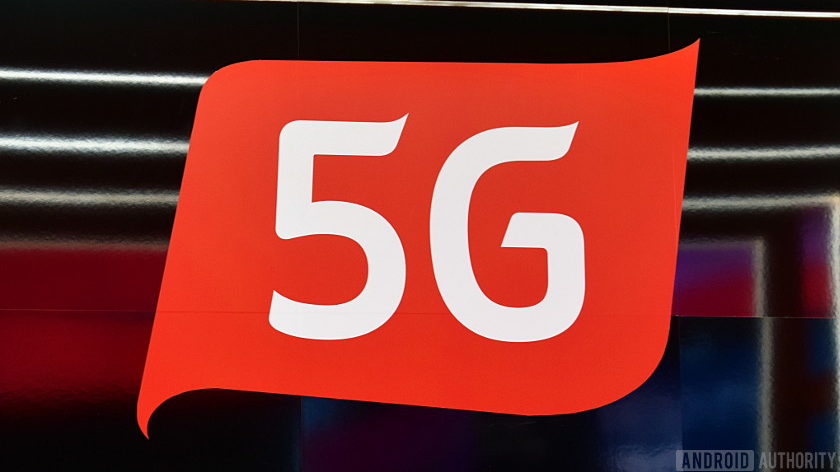
5G networks are now available in much of the world, promising faster data speeds and lower latency to consumers. Smartphones are some of the first devices to support 5G, starting with premium-tier handsets but now quickly reaching less expensive models too.
In addition, this latest networking technology opens up avenues for new industrial applications and is a critical element to build widely connected “smart cities.” However, not every country, region, or even national carrier has its 5G network up and running yet. If you’ve been wondering what is 5G, here’s everything you need to know about the current state of the industry and what to expect.
What is 5G?
5G stands for fifth-generation network and is the successor to 4G LTE networks that have been in operation for the last decade. The promise is faster data speeds, low latency connections, and a host of new use cases, from VR jobs to smart cities. To do this, 5G makes requires new high-frequency radio technologies, device modems, and technologies like beamforming.
The 5G standard is the combined effort of companies around with globe working in partnership to create a unified technology to be used around the world. The official 5G specifications are published by the 3rd Generation Partnership Project (3GPP) and the International Telecommunications Union (ITU). The ITU’s IMT-2020 preparations and 3GPP Release 15 specification lay the foundations for early 5G technology and rollouts.
There are quite a few new components to 5G, so here’s a breakdown of some of the key phrases:
- mmWave – very high-frequency spectrum between 17 and 100GHz and high bandwidth for fast data. Most carriers are targeting the 18-24GHz range. It’s a reasonably short-range technology that will be used in densely populated areas.
- Sub-6GHz – spectrum operating in WiFi-like frequencies between 3 and 6GHz. Can be deployed in small cell hubs for indoor use or more powerful outdoor base stations to cover medium-range much like existing 4G LTE coverage. Most 5G spectrum will be found here.
- Low-band – very low frequencies below 800MHz. Covers very long distances and is omnidirectional to provide blanket backbone coverage.
- Beamforming – used in mmWave and sub-6GHz base stations to direct waveforms towards consumer devices, including by bouncing waves off buildings. A key technology in overcoming the range and direction limitations of high-frequency waveforms.
- Massive MIMO – multiple antennas on base stations serve multiple end-user devices at once. Designed to make high-frequency networks much more efficient and can be combined with beamforming.
High-frequency mmWave base stations, sub-6GHz WiFi-esque small and medium cells, beamforming, and massive multiple-input and multiple-output (MIMO) are all used to build faster 5G networks. But there are also major changes to data encoding and infrastructure network slicing that are seldom talked about. These are all new technological introductions compared to today’s 4G LTE networks.
In addition, the 5G standard is split into several key parts – Non-Standalone (NSA), New Radio (NR), and Standalone (SA). Today’s first public 5G networks will be based on NSA, and are planned to eventually transition over to SA. But more on that later.
What’s the difference between 5G and 4G? How fast is 5G?
The big difference between 5G and 4G is the new technologies used by the former. These include radio frequencies, spectrum sharing carriers, and bandwidth block sizes. These lead to practical improvements, such as faster data speeds and lower latency for 5G versus 4G customers.
For example, 5G users should experience minimum data speeds above 50Mbps, while 4G LTE-A customers may average around 30Mbps. Likewise, 5G boasts sub-10ms latency while 4G customers regularly experience 50ms or much more. However, the exact real-world speeds and latency on any given network have a lot of variables, including the type of 5G or 4G network deployed by your carrier. The table below details some of the more technical differences between early 5G and historic 4G.
| 5G New Radio (Release 15) | LTE-Advanced Pro (Release 13 & 14) | LTE-Advanced (Release 10 to 12) | |
|---|---|---|---|
Ideal Data Rate | 5G New Radio (Release 15) > 10 Gbps | LTE-Advanced Pro (Release 13 & 14) > 3 Gbps | LTE-Advanced (Release 10 to 12) > 1 Gbps |
Ideal Latency | 5G New Radio (Release 15) > 1ms | LTE-Advanced Pro (Release 13 & 14) > 2ms | LTE-Advanced (Release 10 to 12) ~10 ms |
Frequency Support | 5G New Radio (Release 15) Up to 40 GHz | LTE-Advanced Pro (Release 13 & 14) Up to 6 GHz | LTE-Advanced (Release 10 to 12) Up to 6 GHz |
Channel Bandwidth | 5G New Radio (Release 15) Up to 500 MHz | LTE-Advanced Pro (Release 13 & 14) Up to 20 MHz | LTE-Advanced (Release 10 to 12) Up to 20 MHz |
Max carriers | 5G New Radio (Release 15) 16 (LTE + NR) | LTE-Advanced Pro (Release 13 & 14) 32 | LTE-Advanced (Release 10 to 12) 5 |
Max Bandwidth | 5G New Radio (Release 15) 1000 MHz | LTE-Advanced Pro (Release 13 & 14) 640 MHz | LTE-Advanced (Release 10 to 12) 100 MHz |
MIMO antennas | 5G New Radio (Release 15) 64 to 256 | LTE-Advanced Pro (Release 13 & 14) 32 | LTE-Advanced (Release 10 to 12) 8 |
Spectrum Sharing | 5G New Radio (Release 15) mmWave & NR Dual Connectivity NR-based LAA+ NR MulteFire LTE-U | LTE-Advanced Pro (Release 13 & 14) LAA / eLAA LWA MulteFire CBRS / LSA LTE-U | LTE-Advanced (Release 10 to 12) LTE-U (Rel. 12) |
The bottom line is that 5G is faster than 4G LTE and will offer lower latency too, which is important for real-time applications, such as gaming. Because of the new radio technologies involves, receiving 5G’s benefits requires new hardware. 5G smartphones still run just fine on 4G LTE networks, but a 4G phone cannot make use of a 5G network’s faster data speeds.
Read more: 5G vs Gigabit LTE differences explained
How does 5G work?
There are only two core principles to understand what 5G aims to do and how it does it. The first is to make use of more wireless spectrum, as more spectrum means more capacity and faster speeds for everyone. To achieve this, 5G turns to new, high-frequency networking technologies, such as the often talked about millimeter-wave (mmWave). These are known as 5G New Radio (NR) technologies.
Although carriers like to talk up fancy advancements in New Radio technology, 5G networks actually combine a bit of everything. The various technologies can be thought of in three tiers, which HUAWEI explains neatly in many of its papers.
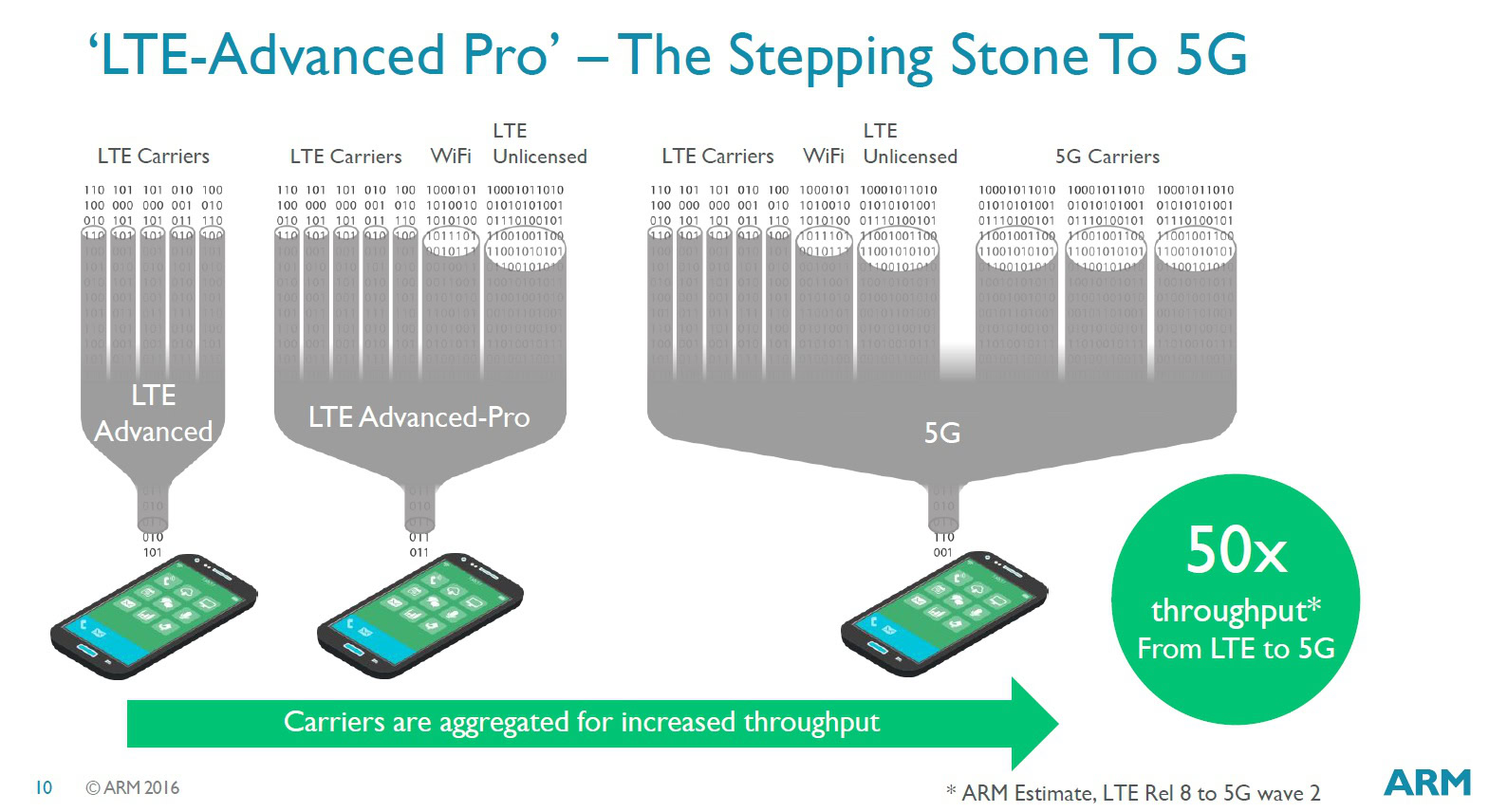
Low bands that can be repurposed from radio and TV make up the “coverage layer” at sub 2GHz. This provides wide-area and deep indoor coverage and forms the backbone of the network. There’s the “Super Data Layer” made up of high-frequency spectrum known as mmWave that suits areas requiring extremely high data rates or population coverage. Then the “coverage and capacity layer” sits between 2 and 6 GHz, which offers a good balance between both.
mmWave coverage will likely be limited to dense urban centers, while sub-6GHz and existing 4G LTE bands continue to cater to broader network access. The end result is a network that looks somewhat like the image below.
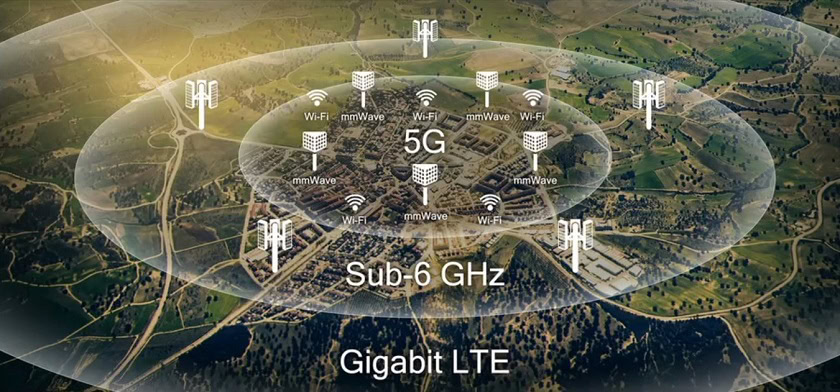
In summary, 5G works by leveraging the benefits of a wide range of wireless spectrum, both old and new. This provides consumers with faster and more reliable coverage not just in densely populated cities, but in rural areas and network edges too.
Take a closer look: How does 5G actually work?
5G mmWave vs sub-6GHz
Given some of the marketing from US carriers, it’s quite easy to mistake 5G and mmWave as the same thing. However, mmWave hasn’t been used in the majority of initial global 5G deployments. Even where it is used, it’s almost always in conjunction with sub-6GHz spectrum.
These two slices of spectrum are uniquely important. Sub-6GHz occupies WiFi-like signals and just above traditional 4G LTE frequencies. Sub-6GHz typically encompasses the region of 3 to 6GHz, giving it flexibility in terms of range and performance that makes it the backbone of 5G networks. It can be used to expand indoor coverage as unlicensed WiFi or moderate distances outdoors with more powerful base stations.
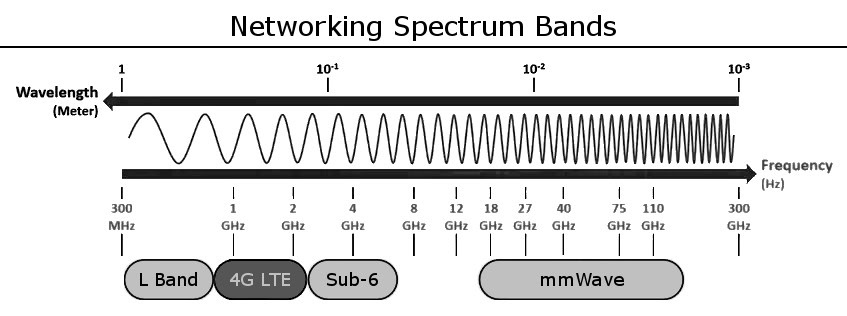
mmWave is the very high-frequency technology that most people think of when 5G is mentioned. mmWave frequencies range from 17 to 100GHz, with around 20GHz typical of current deployments. These high frequencies offer superior speeds but have poor range and line-of-sight requirements compared to sub-6GHz. This limits mmWave’s use cases to densely populated areas that require a bandwidth boost, such as inner cities and large public venues, such as sports arenas.
Because mmWave is a drastic departure from the frequencies previously used in wireless communication, it requires new base-station and user-device hardware. It’s more power-hungry too. As such, it’s more expensive than sub-6GHz and isn’t as widely supported outside of premium-tier smartphones. That’s right, some 5G phones don’t work with mmWave.
Up next: 5G mmWave facts and fictions you should definitely know
Whether you need a mmWave smartphone depends entirely on whether your carrier supports the technology and if you’re in an area that has it. Verizon, for example, sells specific handset variants that work with its mmWave network, while you’d have to consult the spec sheet of a third-party device for compatibility.
Stand-alone vs non-standalone networks
The industry is undergoing a (relatively) smooth transition from 4G LTE into 5G, by appending existing networks with faster 5G New Radio data pipes. In other words, the existing 4G LTE infrastructure still handles all the Control Plane, such as verifying your subscription, routing traffic, etc, while internet data is router via a faster 5G pipeline. This is what is known as a non-standalone (NSA) network, as 5G data still relies on the 4G LTE behind-the-scenes infrastructure.
Eventually, 5G networks will transition over to a standalone (SA) topology, where the 5G Core handles the Control Plane itself. Besides introducing the Control Plane over 5G radio technologies, Standalone supports more flexible Network Slicing and subcarrier encoding.
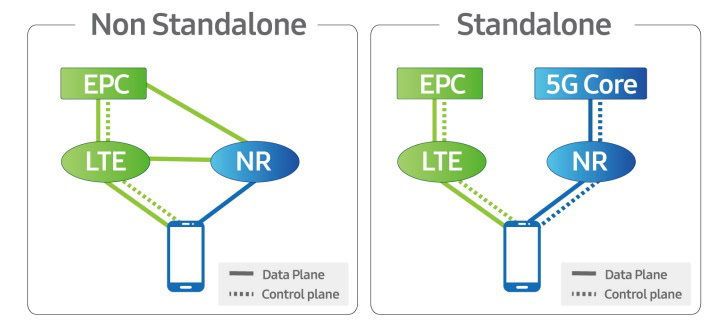
Network Slicing is a virtual networking architecture that enables greater flexibility to partition, share, and link parts of the back-end network together. This will allow network operators to offer more flexible traffic, applications, and services to their customers. This idea is seen as key to realizing ideas such as autonomous vehicles and smart cities. Network slicing can already be done with 4G networks, but 5G aims to improve on the range of flexibility and standardize support.
The first 5G networks are based on the non-standalone specification, but will eventually transition to the full standalone specification.
The changes to subcarriers are a little harder to explain. Technologies encompassed by this include scalable OFDM and sub-carrier spacing, windowed OFDM, flexible numerology, and scalable Transmission Time Intervals. Put simply, frames that carry data can be bigger and faster when higher throughput at high efficiency is required. Alternatively, these frames can be made smaller in order to achieve much lower latency for real-time applications, such as IoT applications for those smart cities.
Our take on 5G: is it worth it?
Faster data is obviously great for downloading huge files, but 5G isn’t a huge game-changer for day-to-day mobile use. Most 4G LTE networks are speedy these days, and you don’t need 100Mbps speeds to browse Twitter. Not forgetting that 5G rollouts are still in their relatively early stages, meaning there’s a good chance coverage may be spotty or even non-existent in your area for the time being. Especially in smaller towns and rural areas.
For that reason, we wouldn’t recommend customers go out and buy a new smartphone just for 5G alone. 4G smartphones from the past couple of years are still perfectly serviceable and still represent good bargain purchases. That being said, all flagship and virtually all mid-range phones support 5G networking in some form. If you are in the market for a new handset anyway, a little 5G futureproofing is certainly a good idea. That way you’ll be set for when 5G becomes much more widespread over the coming years.
Is 5G dangerous or safe?
5G is perfectly safe. Ignore the conspiracy theories, they’re based on a complete lack of understanding of physics and how wireless frequencies work.
Read more: 5G is not going to microwave your brain. All the myths, debunked
To put your mind at ease, 5G radio towers are governed by the same safety regulations and energy limits as existing 4G, WiFi, and other wireless technologies. Sub-6GHz 5G remains in roughly the same region as existing networks anyway, but even higher-frequency mmWave (which operates at far lower frequencies than cancer-causing ionizing radiation) has to abide by existing strict exposure limits too.
Numerous long-term high-quality studies find no link between cellphones and cancer, including ones from the Danish Strategic Research Council, the National Science Council in Taiwan, and Japan’s Ministry of Internal Affairs and Communications, amongst others. The wider scientific and journalist communities are constantly welcoming and reviewing new comprehensive research too. If there were legitimate safety concerns about 5G, you’d find them reported much more widely than Facebook.
How fast is 5G?
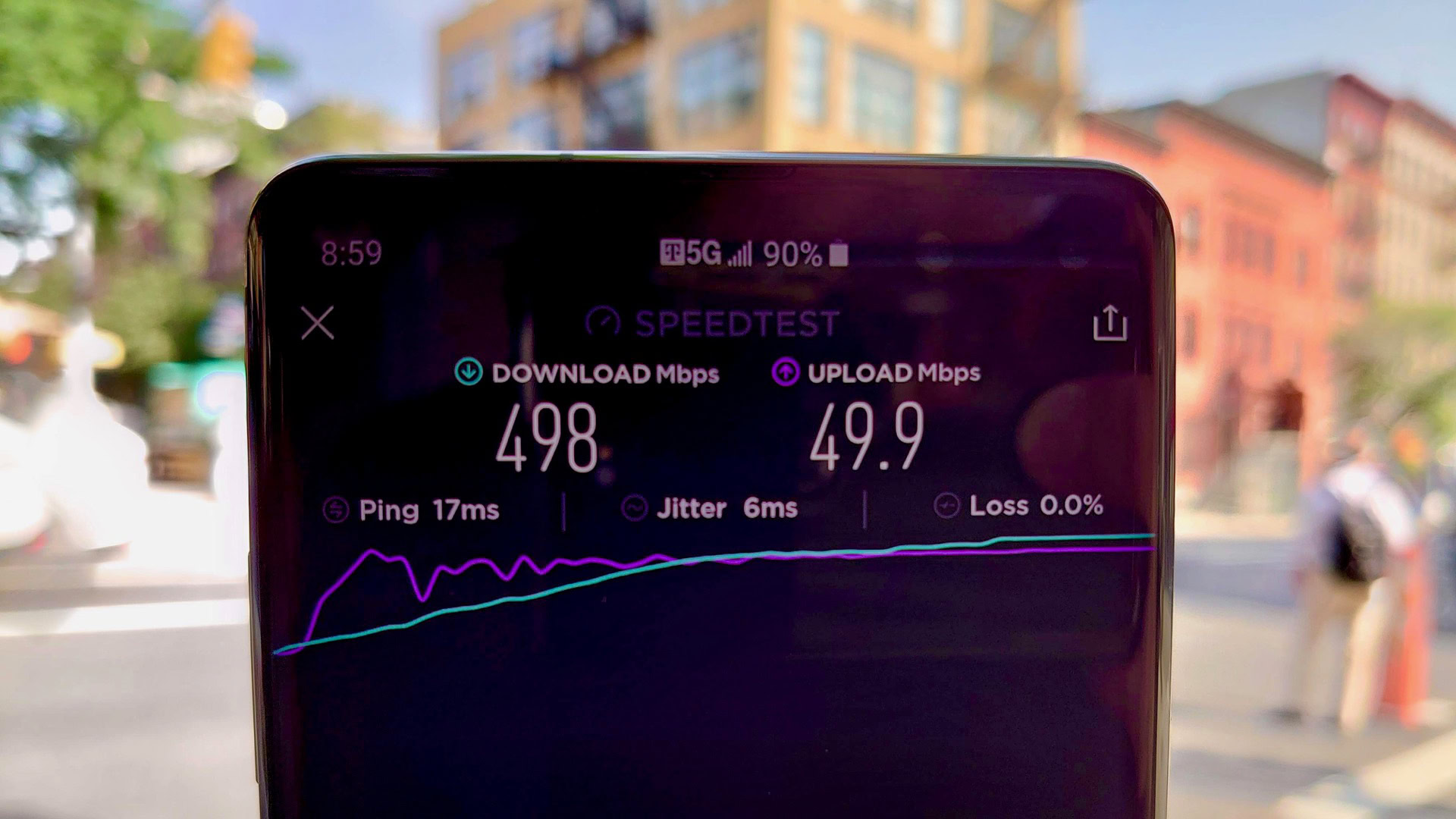
There’s always a difference between theoretical maximum speeds and those that consumers end up receiving. With 5G, network bandwidth can hit up to 10Gbps but for consumers this likely means speeds in the 50Mbps to 100Mbps region as a minimum. Although that could certainly hit closer to 1Gbps in low congestion areas with a nearby mmWave access point. We’ve clocked speeds as high as 500Mbps in our testing, but that’s the exception, not the rule. We’ve also experienced highly variable 5G speeds on some US networks that are no better than 4G, due to patchy coverage even over just short distances.
So how much faster is 5G than 4G? That depends on your specific network, signal strength, and even the modem and technology inside your handset. That’s right, different phones have different maximum speeds. There are already some very fast 4G LTE networks out there too and 5G mmWave can be very temperamental with line-of-sight. So exact speed comparisons are difficult.
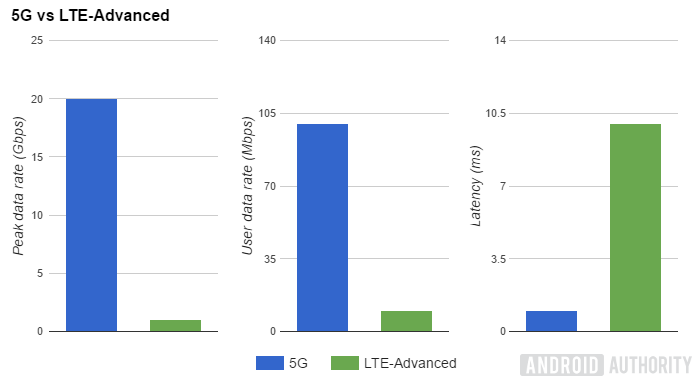
In theory, 5G is anywhere from 5x to 10x faster than current 4G networks. In the future, 5G could end up 20x faster or even higher. However, independent research in 2021 highlighted the spotty nature and 5G coverage and speeds in there here and now.
According to the data, typical US data speeds fell in the region of 30Mbps in 2021. That’s only around 10Mbps faster than pre-5G speeds in 2019, hardly the revolution we were promised. However other countries are much faster, approaching 75Mbps near the top of the carrier leaderboard. The top 10 networks are made up entirely of carriers from South Korea, Canada, The Netherlands, and Singapore.
There’s a notable gap experience gap between carriers and countries. If you’re already on a very fast 4G network, the jump to 5G might not feel as big as those moving from slower 4G networks.
Where is 5G available?
5G can be found at various stages of deployment around the world. Leading the pack are South Korea, China, and the US, followed by many European countries, including the Netherlands, Germany, and the UK, along with parts of South East Asia and the Middle East. However, the most advanced 5G deployments are mostly restricted to cities and other densely populated areas, with more limited rural coverage.
Read more: Here are all the US cities with 5G coverage
According to a GSA report from August 2021, there are 176 operators running 5G commercial networks in 72 countries and territories around the globe. That’s over a third of the world’s nations. North America, Europe, South East Asia, and China are all steaming ahead with strong national rollouts. Central and South America have been a little slower but are coming online, and coverage is spotty across the Middle East.
Perhaps the largest notable absence from the 5G availability list is India. The countries first sub-6GHz 5G networks are now set to come online in late 2022. Spectrum auctions and strained Indo-China relations have been holding back deployment but we can expect more momentum behind 5G in India in the near future.
Further reading: Best 5G plans
What does 5G cost?
You’d think that faster data would cost a lot more, but 5G is increasingly priced competitive with 4G plans and often doesn’t cost anything extra at all. In the US, for example, T-Mobile bundles 5G data at no extra cost from just $15 per month, but Verizon charges $10 extra for access to its 5G Ultra Wideband capabilities.
Just like availability, prices vary a lot on a country-to-country basis. For example, the UK Three offers SIM-only 5G starting at £10. 120GB of 5G data on EE costs £20 per month, but there’s no longer a difference with 4G. Meanwhile, Vodafone charges nothing extra for 5G access in the UK and Germany, and neither does the latter’s Deutsche Telekom. Meanwhile, Australia’s Telstra only offers 5G data with its larger data allowance package, which is another common practice.
Generally speaking, 5G should cost no more than a couple of cups of coffee per month extra compared to your current 4G tariff. The 5G-ready flagship smartphone to go with it is bound to be the bigger expense.
If you’re in the US and looking to move to a new 5G plan, check out our carrier guides below.
Phones with 5G support
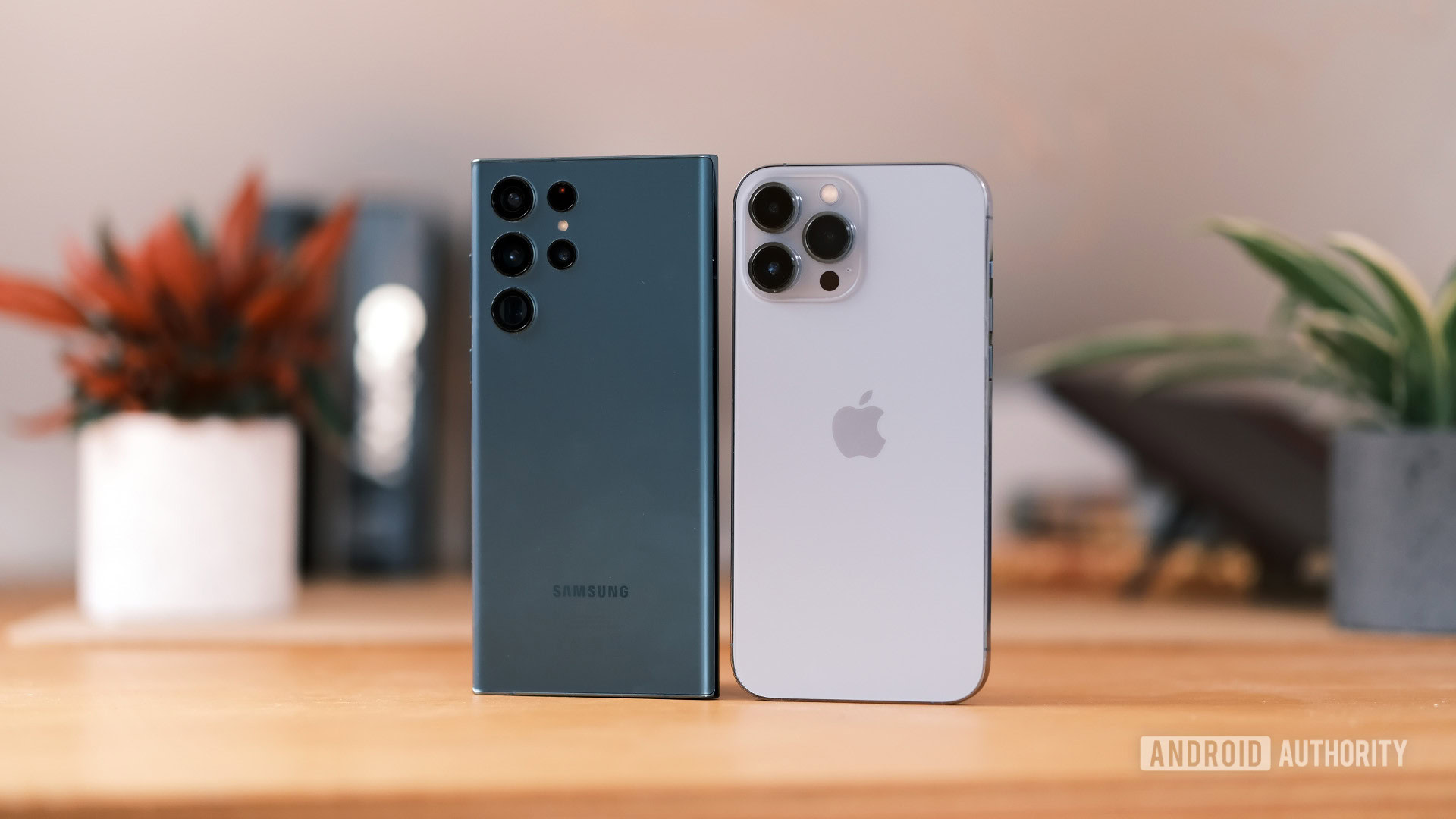
Virtually all flagship smartphones launched in 2020 now support 5G, with sub-6GHz network support being the most popular. If a phone sports the latest Qualcomm Snapdragon 888 processor, or similar from other manufacturers, then it’s all set for 5G. Examples of 5G flagship handsets include the Samsung Galaxy S22, OnePlus 10, and Apple iPhone 13.
5G technology has also quickly made its way to affordable mid-tier smartphones. More affordable 5G phones include the OnePlus Nord 2, Google Pixel 6a, and the Samsung Galaxy A53 5G.
The best way to be certain a phone sports 5G is to look at the spec sheet. Be sure to check that the handset sports the right 5G technologies and bands for your network.
See our list: The best 5G phones you can buy right now
FAQ
No, 5G isn’t dangerous since it does not rely on harmful ionizing electromagnetic radiation. You can read more about this matter in our article discussing the supposed dangers of 5G.
In theory, it’s capable of 500Mbps or even greater. In reality, it’s often not much faster than the latest-gen LTE networks. You’ll typically see speeds around or in excess of 50Mbps.
Most major cities in the US now have 5G coverage. Having said that, you can find a list that covers this topic, here.
Essentially, it is a faster network than 4G LTE, though it’s still far from fully established. In the future, this faster network will allow things like smart cities, traffic lights that can detect cars and change based on traffic patterns, the ability for cars and other Internet of Things devices to communicate, and much more.
While 5G is not strictly necessary today, you should definitely consider it if you intend on keeping your smartphone for longer than a couple of years. Even then, though, 4G will stick around for much longer than that.